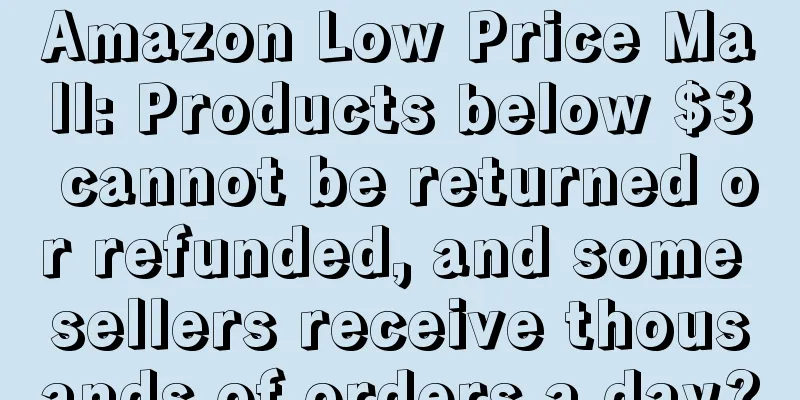Latest, 9 ways to find the best Amazon keywords!

|
The importance of keywords is self-evident. Keywords are the key to obtaining traffic. Setting as many keywords as possible that match consumer needs and searches in advertising can help products gain more exposure and traffic. |
Recommend
What is Amazon Japanese Customer Service? Review of Amazon Japanese Customer Service
Amazon Japan has launched a new service for Chines...
What is Bulbulshop? Bulbulshop Review
Bulbulshop is a shopping e-commerce app that offer...
Another major traffic entrance for Amazon! Directly connect to social media platforms for exposure
Amazon has been making moves to open up traffic po...
What is Excel? Excel Review
Exel is a supply chain and logistics company opera...
Amazon launches new shipment performance feature! Shipments exceeding standards may result in FBA restrictions!
▶ Video account attention cross-border navigation ...
What is ClicksMob? ClicksMob Review
ClicksMob is a mobile display advertising platform...
What is SOJOS? SOJOS Review
SOJOS is a Wenzhou foreign trade enterprise specia...
Urgent notice! Countdown to Amazon’s new regulations!
Amazon's compliance requirements for sellers ...
What is DrumUp? DrumUp Review
DrumUp is a tool that helps you share great conten...
What is White Whale? White Whale Review
Baijing Overseas is a comprehensive service platfo...
Directly close the store! ! Amazon cracks down on illegal mergers of Vine and wool-pulling behavior on a large scale
text Recently, a storm of closures against abuser...
Amazon listing technology renovation decryption (the service provider quoted 1000 black technology)
It is said that this is the listing technology re...
Amazon FBA's new "refund only" policy takes effect! Some sellers have been cheated!
Some time ago, the domestic e-commerce circle was ...
What is Amachete? Amachete Review
Amachete is a handy Chrome extension that provides...
Amazon is checking its corporate accounts?! Some sellers’ payments have been blocked!
In the past two days, a seller received a strange...









